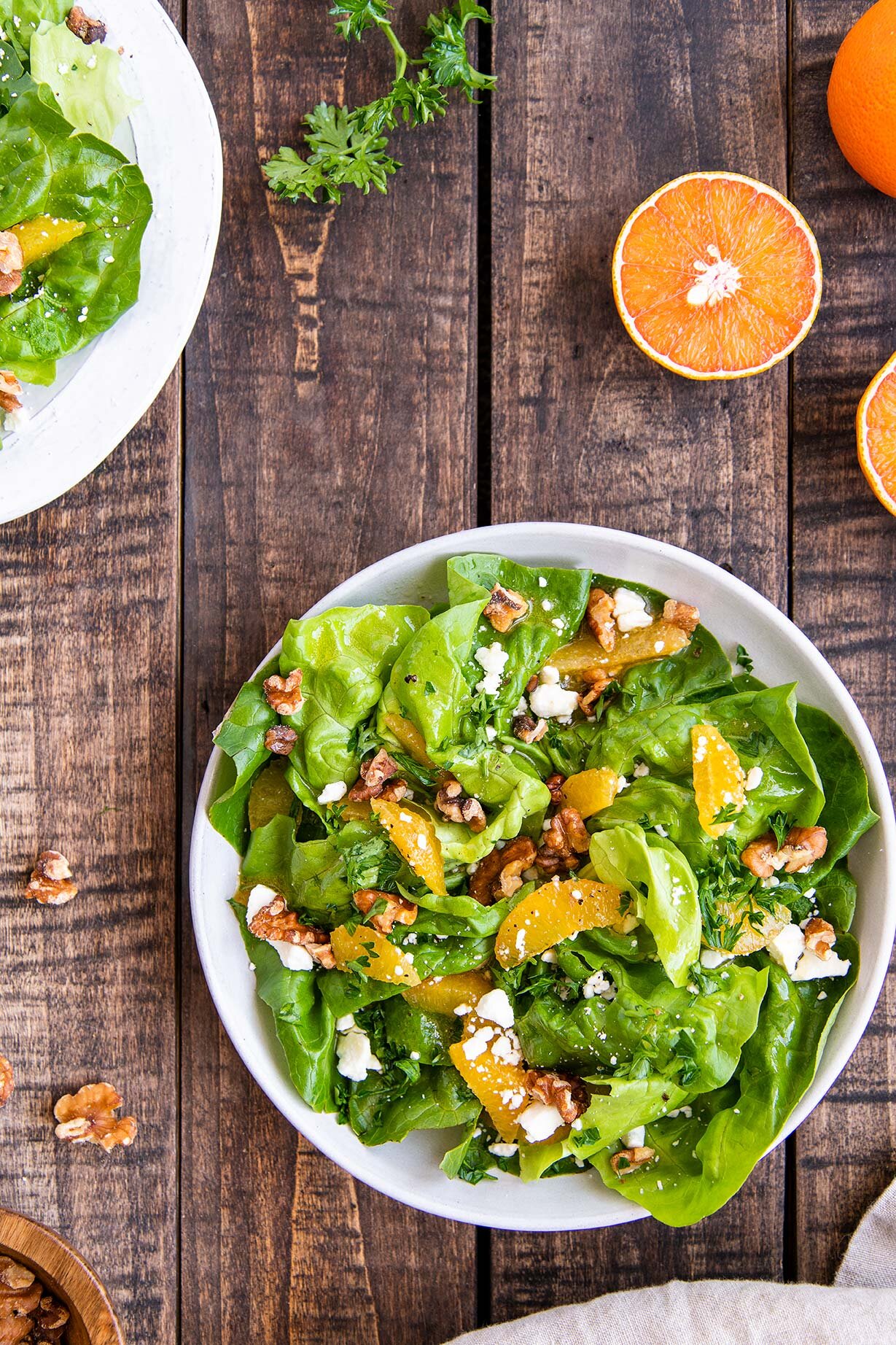Citrus Blossom Salad
/In the middle of winter, most salads fail to hit the spot because the produce isle is generally sad and farmers markets are closed (though this roasted sweet potato and kale salad is usually a good bet). Around January citrus finally hits the shelves, freshly picked and shipped from warmer climates. It’s in that window that this salad should take the spotlight, a perfect stage for citrus varieties you can’t easily find other times of the year.
Orange flower water adds a subtle, elegant twist to the vinaigrette in this recipe (and also how it got its name). It smells incredible and one bottle will last you forever (plus, you’ll be one step closer to making baklava).
Serve this salad with with roasted chicken, a panini, or a warm stew like tagine to make a meal.
Citrus Blossom Salad
Serves: 4 | Active Time: 15 minutes
Ingredients:
For Orange Blossom Vinaigrette:
Directions:
- Arrange lettuce on 4 plates, optionally tearing with your hands to remove any tough stem pieces.
- Segment the oranges by slicing off the peels with a knife, and then carefully cutting segments out from between the pith. It can be helpful to do this over a bowl, to catch any juice. Reserve the left over pieces — we’ll use them to make the vinaigrette. Here is a good video on how to do this. Arrange orange slices over the lettuce.
- Sprinkle walnuts and feta over each salad, and sprinkle with parsley.
- Prepare vinaigrette: Squeeze as much juice from the remaining orange pieces into a bowl. Add salt, orange blossom water and olive oil, and whisk to combine. Drizzle to taste over salads.
- Top with freshly cracked pepper to taste, and serve immediately.











